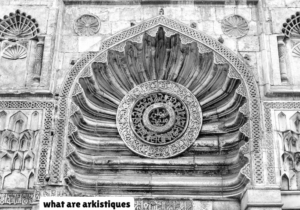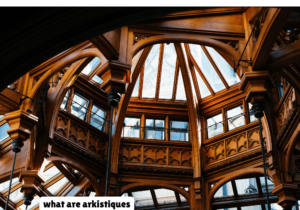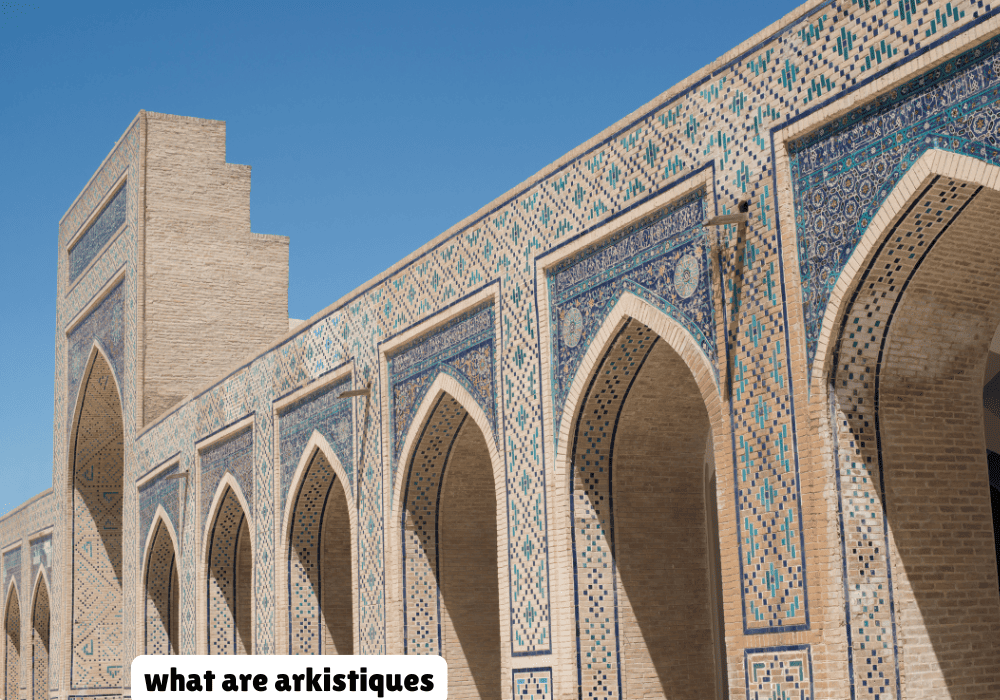In the vast world of art and culture, new terms and movements continuously emerge, capturing the imagination of creators and audiences alike. One such intriguing concept is Arkistiques. But what exactly are Arkistiques? How do they fit into the broader context of art, design, and modern aesthetics? In this article, we will dive deep into the meaning, history, and application of Arkistiques, examining its impact on contemporary art and how it differs from traditional artistic movements.
Whether you’re an art enthusiast, a designer, or someone simply curious about new trends in the art world, this guide will help you understand what Arkistiques are and why they matter.
What Are Arkistiques?
Arkistiques is a relatively new term that refers to a modern artistic movement or style that blends architecture, aesthetics, and artistry into a singular form. This hybrid concept often challenges traditional boundaries between different types of visual arts, bringing together elements of fine art, architecture, sculpture, and sometimes even performance art. The movement emphasizes both form and function, but with a strong focus on innovation and creativity.
In essence, Arkistiques are the result of a fusion between art and architecture, where the design of spaces, objects, or visuals not only serves a functional purpose but is also elevated to an artistic expression.
The Origins of Arkistiques
Like many contemporary art movements, Arkistiques developed as a response to the evolving tastes and demands of modern society. Its origins can be traced to the intersection of architectural design and fine arts in the early 21st century, where artists and architects began collaborating more closely. As modern technology gave artists more tools to experiment with space and form, a new generation of creators began to question the boundaries between these disciplines.
Artists and architects who identify with the Arkistiques movement often draw inspiration from a variety of sources, such as:
- Modernism: The simplicity and minimalism of modernist design played a crucial role in shaping the Arkistiques approach to form and structure.
- Postmodernism: The playful, experimental nature of postmodern architecture and art also influenced the way Arkistiques creators engage with their work.
- Sustainable Design: The growing focus on sustainability and eco-consciousness is also a key element, as many Arkistiques works incorporate natural elements or sustainable materials.
Key Characteristics of Arkistiques

To better understand Arkistiques, it’s essential to look at the defining characteristics of the movement. These features differentiate Arkistiques from other forms of modern art and architecture:
- Fusion of Disciplines: Arkistiques blur the lines between architecture and fine art, creating works that are both functional and visually captivating. An Arkistique piece might serve as a building, an installation, or a sculpture, while still maintaining an artistic narrative.
- Innovative Use of Space: One of the hallmarks of Arkistiques is the creative use of space. Whether it’s a large-scale structure or a smaller, more intimate installation, Arkistiques challenge conventional ways of thinking about how space can be utilized in art and design.
- Sustainability: In response to environmental concerns, many Arkistiques incorporate sustainable materials and eco-friendly designs. This might involve using reclaimed materials, integrating renewable energy sources, or designing with nature in mind.
- Interaction Between Form and Function: Unlike purely aesthetic forms of art, Arkistiques aim to bridge the gap between form and function. An Arkistique piece is designed not only to be beautiful but also to serve a specific purpose—whether that’s creating a livable space or engaging the viewer in a unique way.
- Abstract and Conceptual Influences: While Arkistiques often draw from architecture, many works also incorporate abstract or conceptual art elements. This allows the artist or designer to experiment with new ideas and push the boundaries of what art and architecture can be.
Arkistiques in Architecture
One of the most obvious applications of Arkistiques is in the field of architecture. The movement has inspired architects around the world to think differently about how buildings and spaces are designed. An Arkistique building is not just a structure but a piece of art, carefully crafted to evoke emotions, provoke thought, and engage with its surroundings in a meaningful way.
Examples of Arkistiques in architecture might include:
- Public Installations: Large-scale public artworks that serve as both functional spaces and artistic statements.
- Urban Design: The integration of artistic elements into urban planning and city design, where buildings, parks, and public spaces become interconnected through Arkistique principles.
- Sustainable Architecture: Eco-friendly structures that are both aesthetically pleasing and designed with environmental considerations in mind.
Arkistiques in Fine Art
In the fine arts, Arkistiques take on a different form but still maintain the core principles of blending form and function. Artists within this movement may create sculptures, installations, or even digital works that challenge the viewer’s perception of space and aesthetics.
Some artists use Arkistiques to explore the relationship between the viewer and the artwork, creating interactive installations that change depending on how the audience engages with them. Others may focus on the use of natural materials or sustainable practices to create thought-provoking pieces that comment on environmental issues.
Arkistiques in Interior Design
Interior design is another area where the Arkistiques movement has made significant strides. Many interior designers are incorporating Arkistique principles into their work, creating spaces that are not only functional but also deeply artistic.
Incorporating Arkistiques into interior design often involves:
- Innovative furniture: Pieces that are both practical and sculptural, serving as focal points within a room.
- Sustainable materials: The use of eco-friendly materials that reflect a commitment to sustainability while also enhancing the visual appeal of the space.
- Fluid spaces: Designing interiors with flexibility in mind, allowing for rooms and spaces to be easily transformed or adapted for different uses.
The Future of Arkistiques

As the world of art and design continues to evolve, Arkistiques are poised to play an even more significant role in shaping how we think about the relationship between art, architecture, and function. The movement is particularly relevant in today’s world, where sustainability and innovation are becoming increasingly important.
Looking ahead, we can expect to see more architects, designers, and artists adopting Arkistiques principles in their work. This could lead to new forms of collaboration between disciplines, as well as a continued focus on creating works that are both aesthetically compelling and environmentally conscious.
How to Identify an Arkistiques Work
If you’re interested in learning more about Arkistiques, it helps to know how to identify a work that falls under this category.
- Hybrid Nature: Arkistiques pieces often combine elements of architecture and fine art. This might mean a sculpture that also functions as a building or an installation that incorporates architectural techniques.
- Innovative Use of Materials: Many Arkistiques works feature unusual or innovative materials, often with a focus on sustainability. Look for reclaimed wood, recycled metals, or other eco-friendly materials.
- Interaction with Space: Arkistiques pieces are often designed to interact with their surroundings in a meaningful way, whether that’s through the use of light, shadow, or natural elements.
FAQs About Arkistiques
1. What are Arkistiques?
Arkistiques is a contemporary artistic movement that blends elements of architecture and fine art to create works that are both functional and aesthetically captivating.
2. How are Arkistiques different from traditional art or architecture?
Unlike traditional art, which often focuses solely on aesthetics, or architecture, which is primarily functional, Arkistiques bridge the gap by emphasizing both form and function in equal measure.
3. Can I see examples of Arkistiques in everyday life?
Yes! Many cities now feature public installations or buildings designed with Arkistique principles, such as sustainable urban designs or innovative public art pieces.
4. How do Arkistiques relate to sustainability?
Sustainability is a key component of the Arkistiques movement, with many works incorporating eco-friendly materials or designs that consider the environmental impact.
5. How can I incorporate Arkistiques principles into my own home or workspace?
To bring Arkistiques into your space, consider using sustainable materials, choosing functional yet artistic furniture, and thinking about how your space interacts with natural light and the surrounding environment.
Conclusion
Arkistiques represent a dynamic and forward-thinking approach to both art and architecture, offering a way to merge aesthetics with function in creative and innovative ways. As this movement continues to evolve, its influence is likely to grow, shaping the way we think about space, sustainability, and design in the 21st century.
Whether you’re an artist, architect, or simply someone interested in the latest trends in design, Arkistiques offer a fascinating glimpse into the future of art and architecture.




